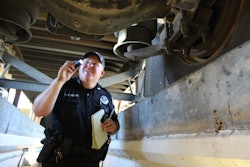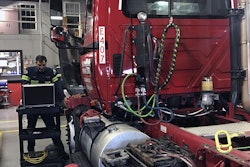Cargo securement issues accounted for 12.2% of out of service (OOS) violations during last year’s Commercial Vehicle Safety Alliance International Roadcheck, the No. 4 violation on the list preceded by brake adjustment (17.1%), tires and wheels (19.3%) and braking systems (28%).
The top five violations for the annual safety blitz – the 2020 installment of which starts next week – are failure to prevent shifting/loss of load; failure to secure truck equipment; damaged tie downs; insufficient number of tie downs; and loose tie downs.
No doubt, mastering cargo securement use can lead to a downturn in violations and a safer journey.
“When you step back and just try to look at the basics, the first thing you’re going to do is make sure the load is safe, stable and immobilized,” Ralph Abato, president and managing director of Doleco USA.
“If you’ve got pipes rolling around and you’re going to put some tie-downs on it, you’re already starting out on the wrong foot. So make sure the load is safe, stable and immobilized,” Abato added.
Some loads call for certain securement devices.
“The next thing is you have to make sure you’re using the proper load securement and that might mean on a particular load you might be needing to use chain and load-binders,” Abato said. “And on other loads, textile, web, winch straps or ratchet straps could be much more applicable. And that would be if you’ve got some sharp steel product, maybe that calls for steel chain—something you wouldn’t want to put webbing on because it would be cut.”










